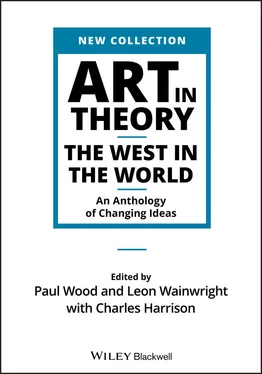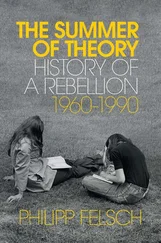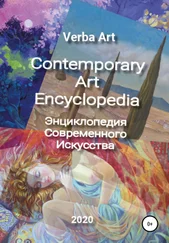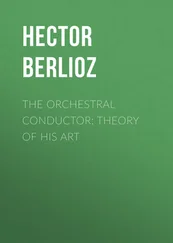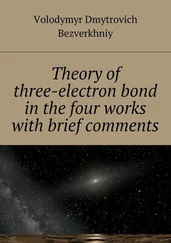IA6 Giovanni da Empoli (1483–1518) On India, Ceylon and the Spice Islands
In 1498 the Portuguese navigator Vasco da Gama rounded the Cape of Good Hope, the first European to do so. Thereafter, with the help of Arabian pilots encountered on the east coast of Africa, he sailed on to India. Subsequent exploration led to the establishment of fortified trading posts along the coasts, and from 1510, Goa became the capital of Portugal’s ‘Estado da India’. Further expansion into south‐east Asia, especially the ‘spice islands’ of what is now Indonesia, led to an influx of goods which turned a relatively small, poor country on the extreme western edge of Europe into one of the richest powers of the period, and its capital Lisbon into a world city. Giovanni da Empoli was a young Florentine merchant who worked for financial concerns in Bruges. He made three voyages from Lisbon to the East Indies in the first two decades of the sixteenth century. From one of these he wrote a letter to his father describing the places and products he had seen. The present extracts focus on spices, mentioning pepper, ginger, cinnamon, saffron, nutmeg and cloves, as well as pearls and rubies, manufactured cotton cloth and silk. The letter, dated 2 July 1514, is included in M. Spallanzani (ed.), Giovanni da Empoli: un mercante fiorentino nell’Asia portoghese , Florence: Studio per Edizione Scelte, 1999, pp. 159–207. The extracts were translated by Kathleen Christian.
Moving on to India, as you already know and as I have told you, these are gentiles, that is, idol‐worshippers and natural men of the earth who worship Mars as their primary god. Nevertheless, they know and believe that there is one great God, because ‘the sound [of the heavens praising God] hath gone forth into all the earth’, etc. There are foreigners there (who rule over the natives) and various sorts of Moors, who follow the law of Muhammad … In the land of India called Malibar, the territory that begins with Goa and goes up to Cavo Comedi [Kanyakumari], they produce pepper and ginger, and goods which you already know about. Moving beyond Cavo Comedi there are gentiles, and there one finds Gael [Kayalpatnam], where they fish for pearls, and the body of Saint Thomas the Apostle is found here. Moving further between the land and the sea you find the Island of Ceylon, where they produce cinnamon, saffron and Asian rubies in great abundance. This is a very beautiful, well populated and well situated land.
Returning to the mainland, and to Gael, you find Coromandel [the Coromandel Coast], where all the rice exported to Malacca comes from; and it is a land greatly abundant in merchandise of all sorts. Then there comes Bengal, also gentiles, where they make cotton cloths of all varieties, very fine ones, called brattiglie, barracano, sultanpuri [different types of cloth], and other sorts of very fine cotton cloths. They also have preserved green ginger, which is excellent, and all other types also preserved, and great quantities of fine cane sugar and white sugar as refined as that of Valencia.
Then a bit further you find Martaban [Mottama in Myanmar], which is also populated by gentiles, men who are great merchants and knowledgeable in all things, and who are experts of accounting; the best in the world. They write out their accounts in books just as we do. In this land you find large quantities of lacquer, cloth, merchandise and other things. Then Tanazzari [Tenasserim] and Sarnau [Siam] where they make very fine white benzoin resin, storax gum and lacquer which is finer than that of Martaban and Scale [unidentified location], and where the Chinese go to sell their goods, that is, rhubarb, musk, silk damask, brocades, white silk, raw silk in all colours and Chinese pearls. Here you find all sorts of spices which the Chinese buy and bring back to their country….
Beyond Malacca, they don’t make anything and they are natural people of the earth and gentiles, and the others are Moors of several generations. Moving further, you come to the land of Java where they produce nutmeg and mace, cubeb [tailed pepper or Java pepper], turpeth, galangal [a plant related to ginger], camphor of two varieties, aloes and an infinite number of other medicines. One type of tree produces both nutmeg and mace. I’m sending you on this ship a specimen which is still green.
And further on is Timor, where white and yellow sandalwood come from, and further on are the Moluccas, where cloves are produced. I am sending you the bark of these trees, which is excellent, as are the flowers. […]
Believe me, his Highness the King of Portugal is the lord of great conquests, and lands, and principalities, but even more of the sea, and of riches of all sorts; one might even say he is lord of the world.
IA7 João de Castro (1500–48) from Roteiro de Goa até Dio
João de Castro was a remarkable mixture of scholar and man of action. In his early life he was involved in humanist debates in Portuguese court circles, while interests in science and geography helped him to do significant work on developing the compass for navigation. After an early military career in North Africa he went to the Portuguese colony in Goa in 1538. He subsequently led expeditions to Arabia and East Africa, mapping the coastlines en route. He later became governor and eventually viceroy of Portuguese possessions in India. Unusually for the time, he drew on his early humanist experiences to develop a positive interest in Indian art and culture. Partha Mitter’s pioneering study of changing European responses to Indian art was researched in the early 1970s and first published as Much Maligned Monsters in 1977. Mitter’s account works within an explanatory framework in which the prejudices of Christian‐inspired critiques of Indian art as ‘monstrous’ are gradually replaced by more objective Enlightenment knowledge. (For a contrasting approach which has since become dominant in post‐colonialist art studies, see the extract from Edward Said at VIIA8). One of the texts Mitter brought to light was a description by Castro of the temple of Elephanta in western India. It stands as a kind of humanist‐inspired forerunner of Enlightenment responses to Indian art, in a period otherwise dominated by negative, religiously inspired criticism. In the present extract Castro offers both an empirically grounded description of the temple and a positive assessment of its artistic accomplishment – comparing it favourably to classical examples and recommending it to the study of even the most eminent artists. Castro’s account is thus an exception to the rule that early modern Europeans tended to be mesmerized by the richness of Eastern material cultures while yet deploring their art (cf. IA6 and 9). Our extract is taken from Appendix 2 of Much Maligned Monsters: A History of European Reactions to Indian Art [1977], Chicago: University of Chicago Press, 1992, pp. 326–7 and 329.
The mountain on this island is hard natural rock … 1Beneath the mountain a vast temple was cut and fashioned, hollowing out the living rock, a temple of such marvellous workmanship that it seems impossible for it to have been made by human hands. All the works, images, columns, reliefs, workrooms, which are there are carved in the massive stone of the mountain, all of which seems to pass beyond the bounds of nature; indeed, the proportions and the symmetry with which each figure and everything else is made would be well worth the while of any painter to study, even if he were Apelles. This temple is 35 braças 2long, 25 wide and about 4 high … Running through the entire temple are straight rows of columns that appear to hold up the vault which is flat and very straight. There are 42 pillars in all, spaced at regular intervals. Corresponding to the place where we set the high altar in our churches, in this temple there is a square chapel. In each wall of the chapel there is a small low doorway and each of the doorways is guarded by two ferocious giants which are 21 palmos 3high. Within this chapel is an altar placed in the middle, and above it is a large sphere which must represent the world. The whole temple is surrounded by 12 chapels, and in each of them there are many and various stories sculpted in unique Roman style [relief work?], all carved, as I have said, in the living rock. In one of these chapels is a man who reveals himself from the waist upwards and has three large faces and four arms. In his right hand he holds a hooded cobra by its head and in the left hand he holds a rose; in another hand he holds up the world and the last is too damaged to show the device he is holding. Concerning the stories in the other chapels I shall say something but only a little. In one is a large man, like a giant, who has 8 arms, two of which are raised high, apparently sustaining the vault of the chapel; in the third he has a raised sword, and in the fourth he has a little bell, but in the fifth he holds a child by one foot with its head dangling downwards; then in the sixth he holds a vessel like a bowl, and inside it is wrapped up a chain of children’s heads and a cobra. The last two of the eight arms are broken. In this chapel there are an infinite number of images with their hands upraised as if giving thanks to God. In another chapel is the figure of a gigantic woman, totally naked and with only the left breast, and with no sign of the right one, as is written of the Amazons. This temple has two doors, the main one and the side door. The main door and the main chapel are both orientated on an East‐West axis; and the side door, like the chapel with the image with three faces, is placed on a North‐South axis. And in this direction run the rows of pillars. Behind the main chapel on one side of the building is a spring of the best water I have ever seen in these parts, and nowhere in this temple is there an image which has a beard nor any that has clothing. On the left‐hand side of the main doorway is another large building in the same way excavated from the living rock, set very deep down in the mountain, where there is carved out a large temple, at the back of which are large arcades and chapels and workrooms, and everywhere are carved representations of many and various stories in relief [Roman style?] of great perfection, with many giants and dwarfs, and the whole building is set 15 braças below the mountain, and it goes a long way in. I won’t write about all its details because it would be insupportable: there are so many novelties and stories represented in it.
Читать дальше
